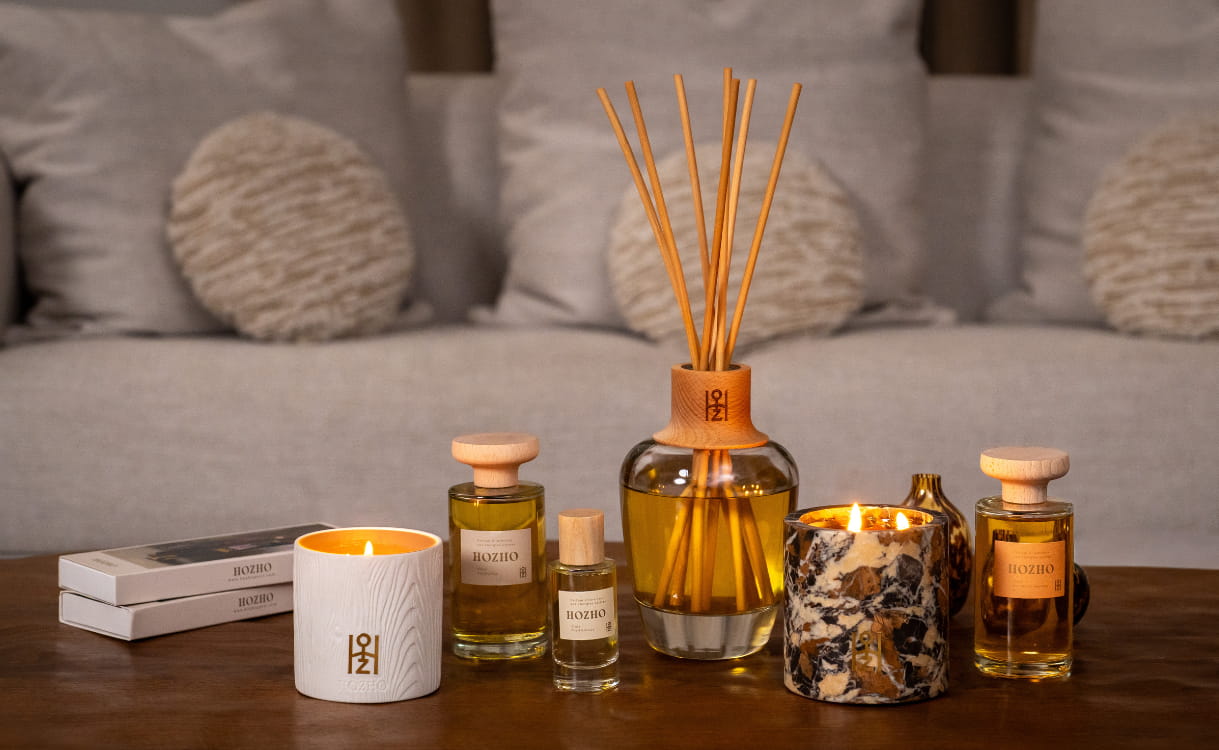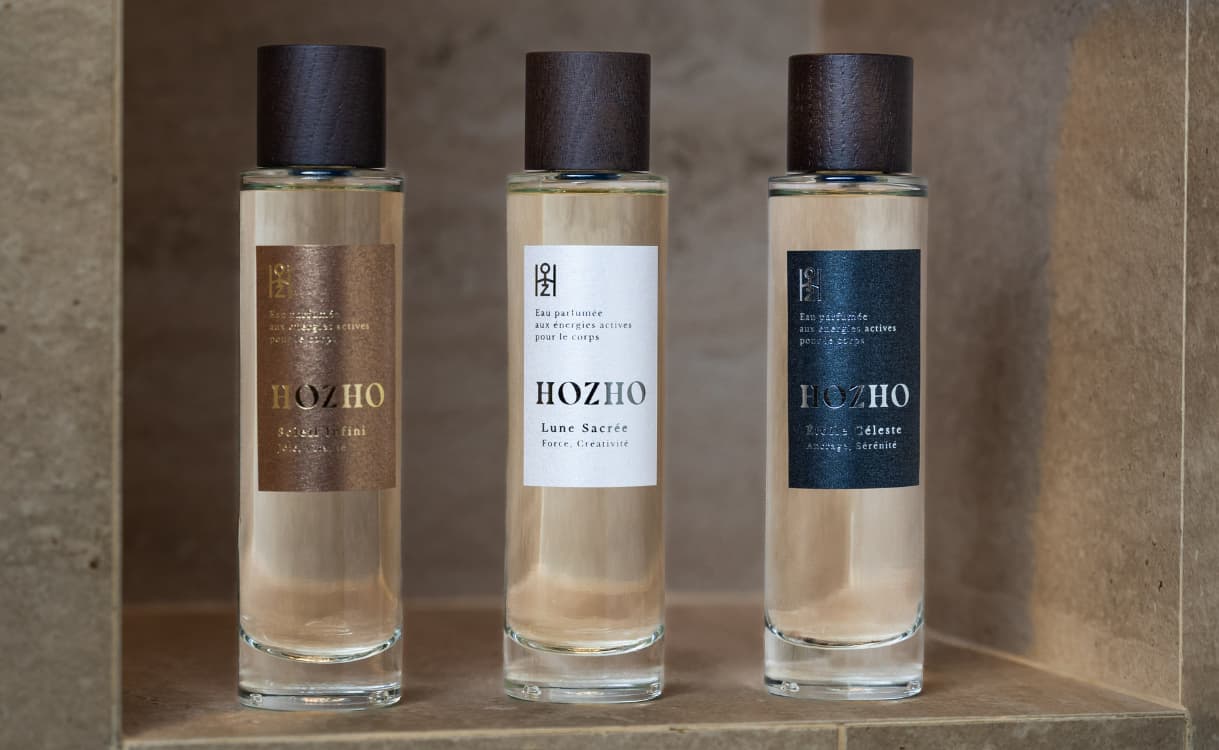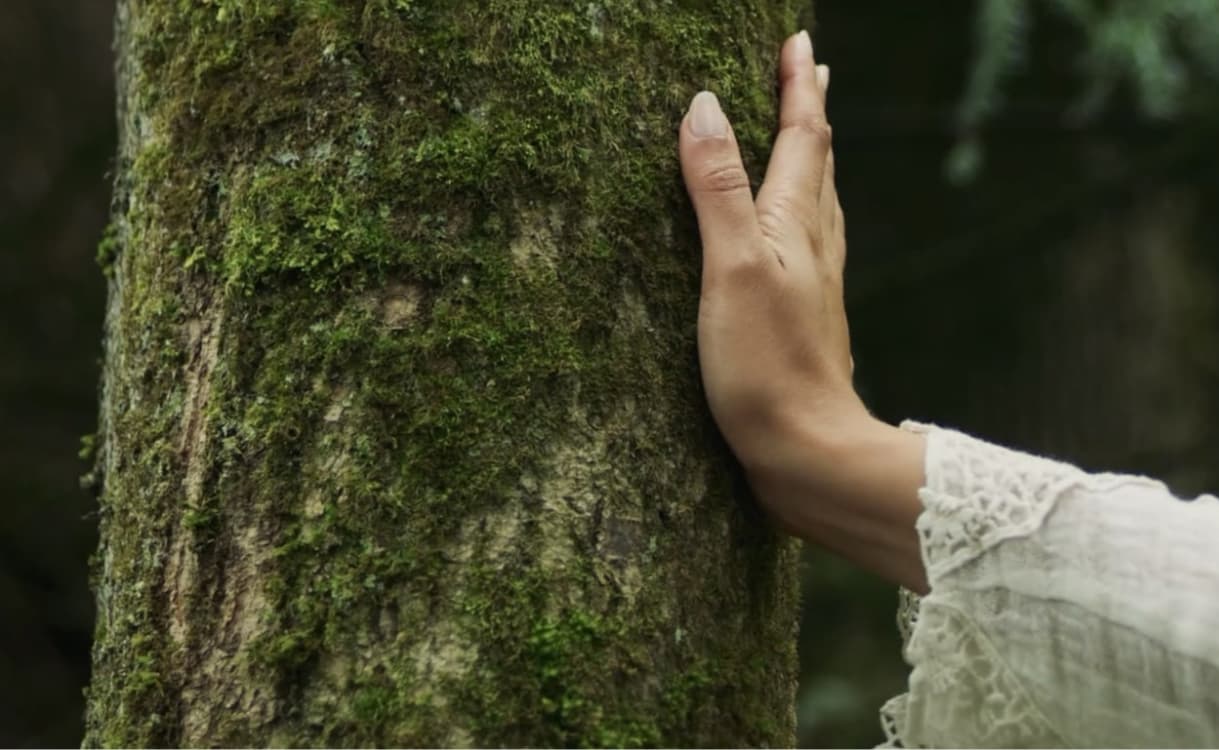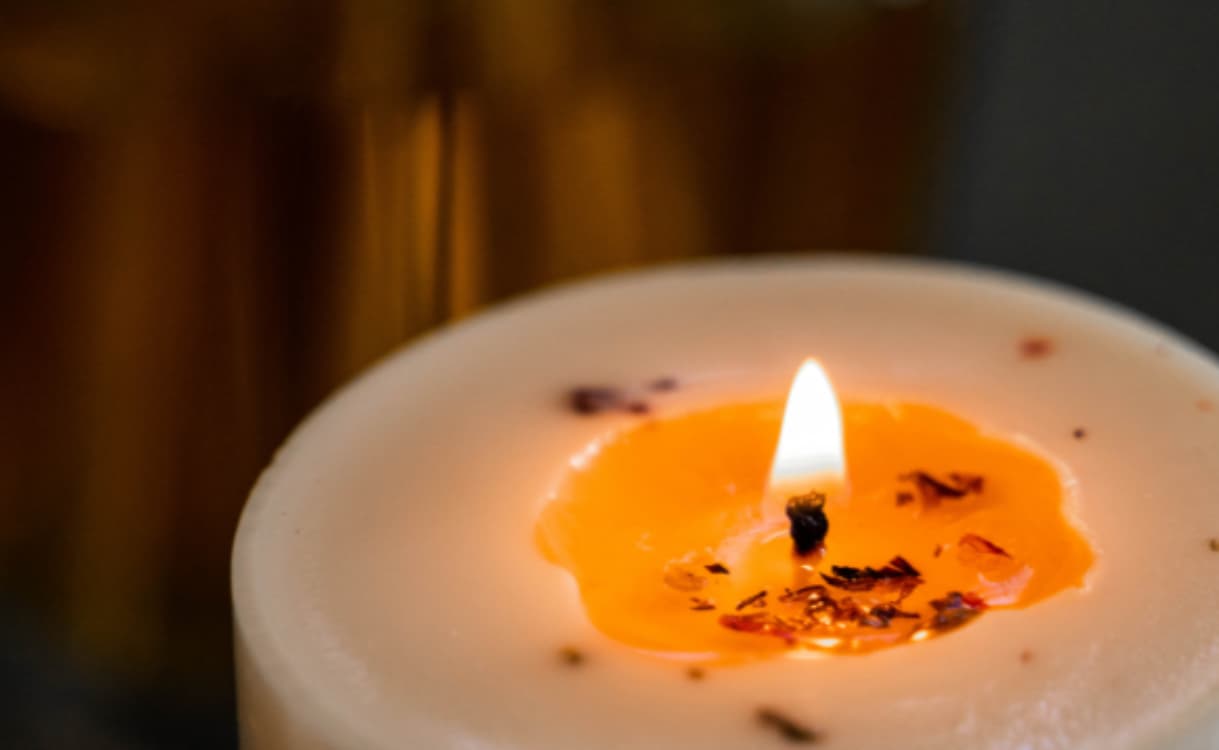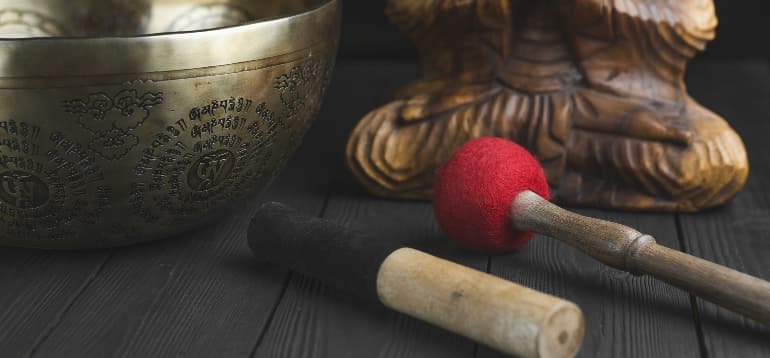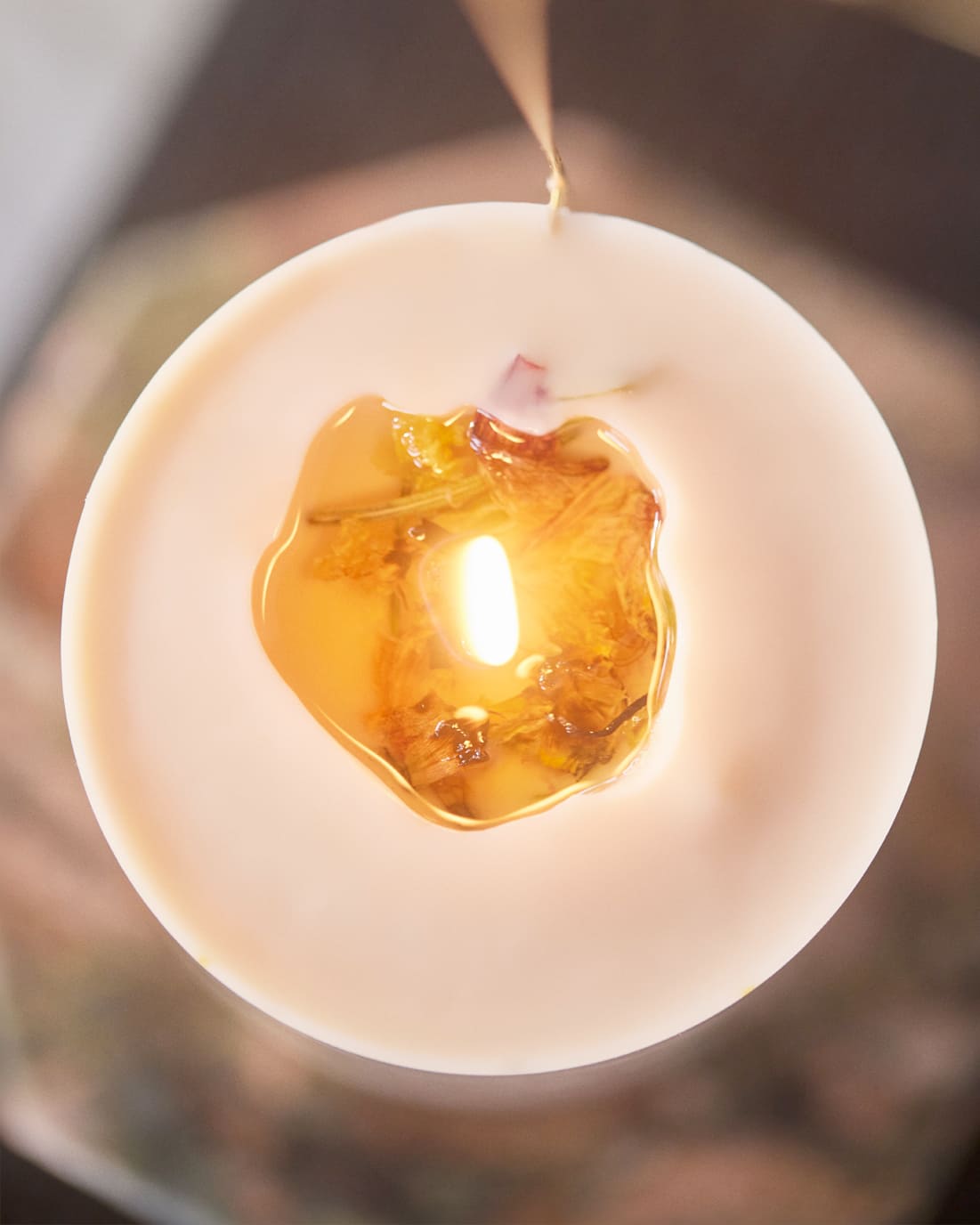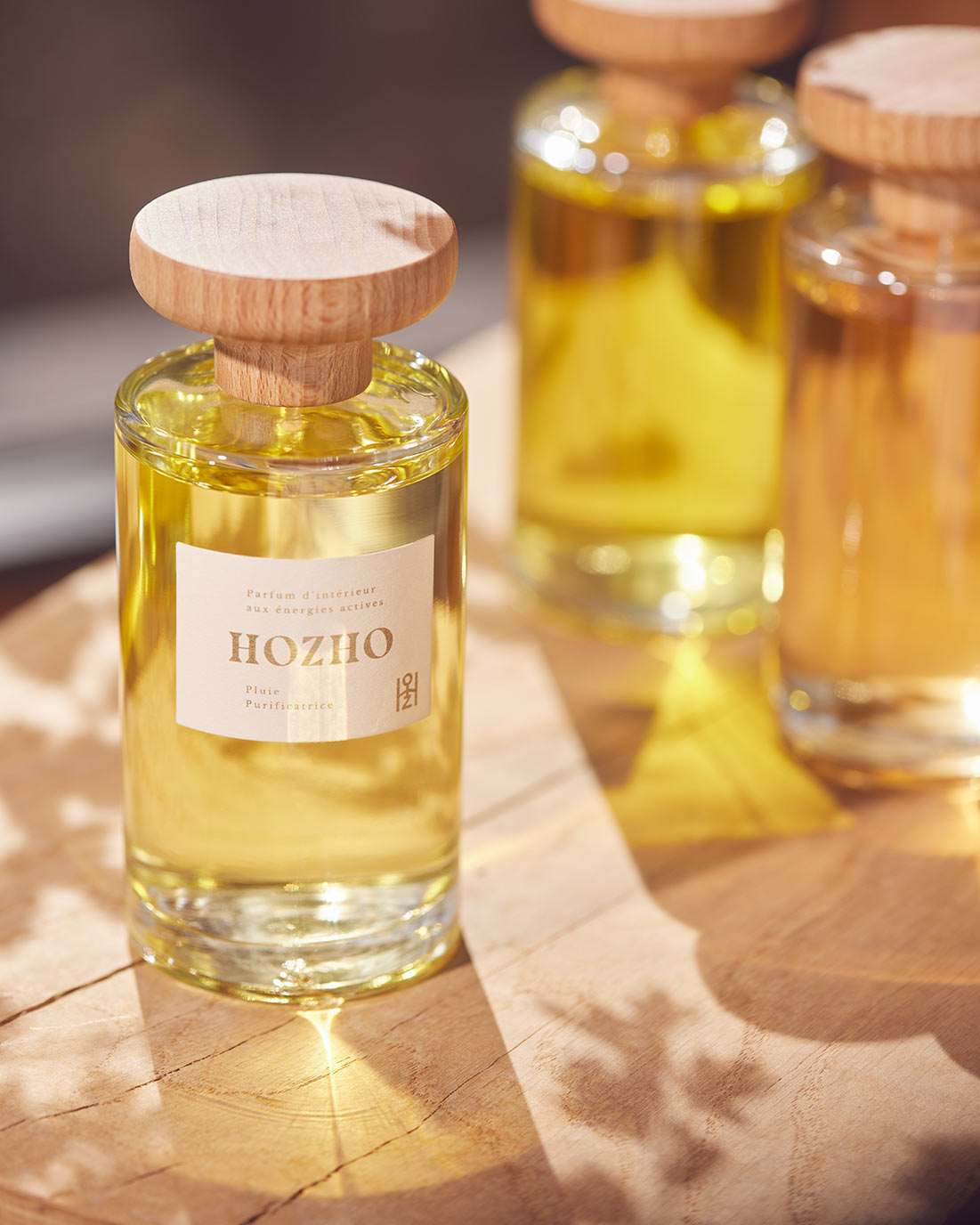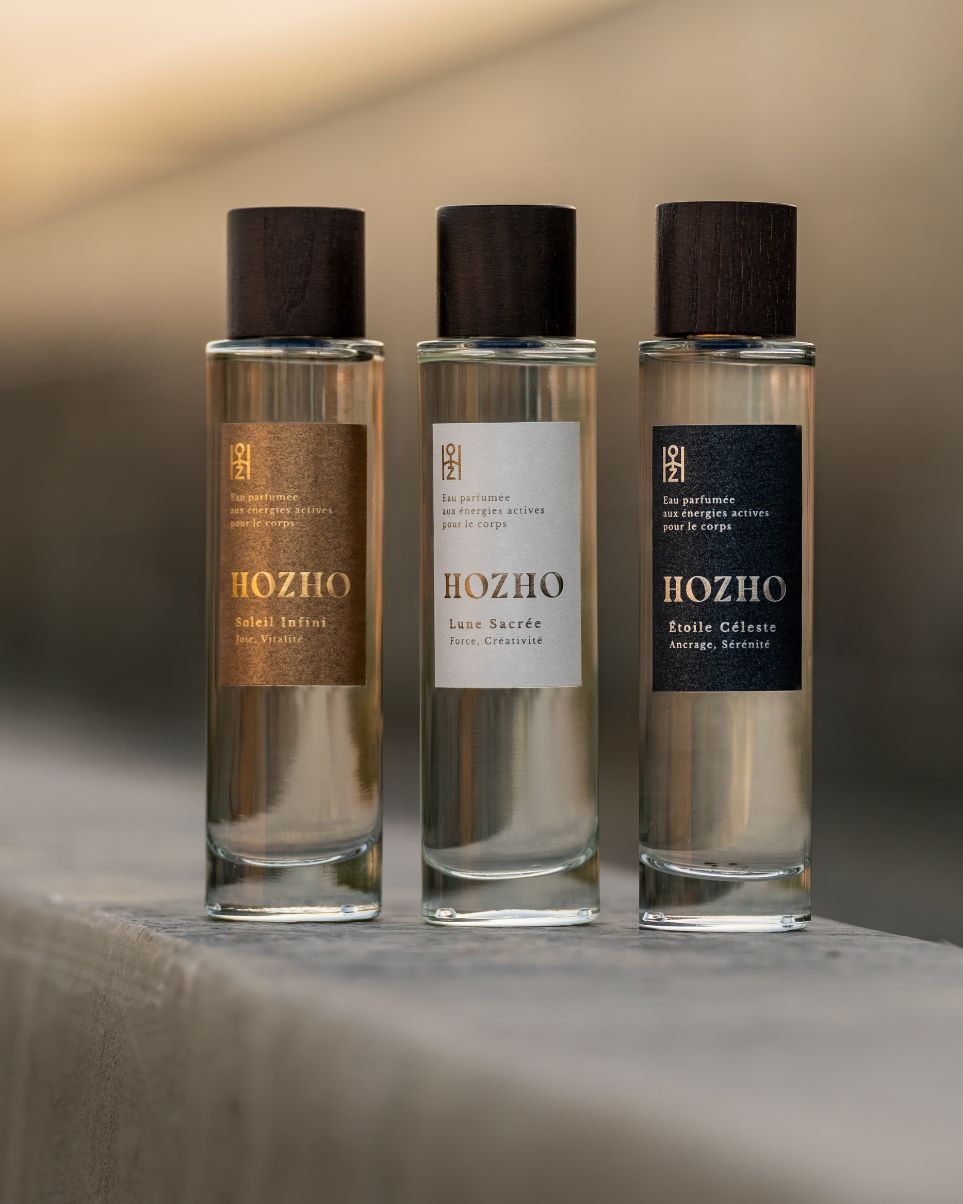Lavender: spiritual and energetic virtues

Lavender, with its exceptional spiritual and energetic virtues , has accompanied humanity in its rituals for millennia. Under the Mediterranean sun , it flourishes on the hillsides of Provence , and fills the air with its characteristic fragrance that soothes, reassures and protects. Since ancient times, it has been slipped into homes to purify the atmosphere , calm the mind and protect the family from harmful influences.
Its energetic properties make it a valuable companion against nervousness , stress or sleep disorders . Current scientific research confirms what the Ancients knew: its aroma acts on the nervous system, reduces cortisol , stimulates the production of endorphins and oxytocin , to support relaxation and emotional balance .
Lavender is used in simple gestures, which vary according to beliefs and cultures. It is used in fumigation to chase away evil spirits . In the form of an energetic candle , it creates an atmosphere conducive to meditation. Diffused as a home fragrance, it accompanies meditation or writing agratitude journal .
With each use, it helps to slow down the flow of thoughts, to establish a peaceful breath and to nourish inner openness . Its multiple benefits help to restore calm and offer a path of peace and harmony .
The biological characteristics of lavender
An emblematic plant of the Mediterranean basin, lavender belongs to the Lamiaceae family. It likes dry, calcareous, sunny soils, where it grows like a child of the sun . On the hills of Provence , every summer it creates large purple carpets that perfume the atmosphere with a scent that is both delicate and persistent.
There are several varieties, each with its own personality. True lavender ( Lavandula angustifolia ) seduces with its finesse and refined fragrance, highly sought after in aromatherapy. Spike lavender ( Lavandula latifolia ), with a more camphor-like scent, has long been used in traditional remedies. Butterfly lavender ( Lavandula stoechas ), widespread in Spain and the Maghreb, adorns landscapes with its original flowers. Finally, lavandin ( Lavandula x intermedia ), a vigorous hybrid, provides an abundant essential oil used in perfumery and everyday products.
Lavender is still found in the wild, in scrubland and dry mountains. But its cultivation has become more organized over the centuries. In organic farming , it is grown without pesticides, to respect biodiversity and provide a purer essential oil. Conventional farming , geared towards the perfume industry, prioritizes productivity and export.
Today, global demand is growing considerably. Bulgaria is establishing itself as the leading producer, while France maintains its prestige thanks to the excellence and authenticity of its Provençal crops . Thus, lavender embodies both the strength of a wild and local plant , and openness to the world. It remains a symbol of awakening , creativity , well-being and harmony .
Lavender in ancient beliefs and mythologies
Since ancient times, lavender has accompanied people in their rituals, related to both life and death. In Egypt , it was used in the composition of funeral ointments and embalming: its fragrance served to purify the soul and protect against negative influences . Residues of lavender-scented oil, found in funerary urns now preserved in the British Museum2, still bear witness to its sacred role throughout the centuries.
Among the Greeks , it was called nardus and symbolized love and healing. Hippocrates himself recommended its use to calm nervousness and support the weakened body. The Romans , for their part, perfumed their baths with it. Its name comes from the Latin lavare , which means "to wash," because it purified both the body and the agitated mind .
In the Middle Ages, lavender naturally found its place in monastery gardens. It was believed to have the power to protect communities from epidemics and preserve homes from harmful influences . Medieval illuminations sometimes depict it as a blessed plant, guardian of spiritual balance . Later, Christian tradition associated its soft color and pure fragrance with the Virgin Mary.
In Provençal folklore , lavender had the value of a talisman . It was hung on doors to drive away evil spirits , and it was burned as a fumigation at weddings and funerals to purify the place and invite peace. From these legends emerges the same conviction: lavender was not a simple plant, but a companion of the soul, protective and inspiring, guardian of harmony .
Lavender and energy
Beyond its delicate fragrance, lavender has energetic properties that have been recognized for centuries. It soothes tension, purifies spaces, and supports emotional balance . It is said to dissipate invisible heaviness, restore a gentle flow of energy, and offer the mind a space of calm and relaxation .
Its action is also felt on a physiological level. Studies have shown that it reduces cortisol , the stress hormone, while promoting the release of endorphins and oxytocin 3 , natural messengers of well-being and relaxation . Thus, lavender accompanies those who suffer from anxiety , nervousness or sleep disorders , helping the restless mind to regain peaceful breathing.
In spiritual practices, its scent acts as a discreet and benevolent support. Lighting a lavender energy candle or a lavender room diffuser helps create an atmosphere conducive to meditation and the recitation of mantras . Its scent awakens creativity , opens the soul and mind and becomes a gentle invitation to listen to oneself.
It is in this continuity that HOZHO imagined the Harmonizing range. Each creation is born from a powerful synergy where lavender unites with other exceptional plants and resins. Valerian soothes the mind, sandalwood roots and connects to the spiritual dimension, amber warms and protects, while the red rose opens the heart. Together, these plant allies rebalance the energies of a place and promote, deep down, inner harmony .
Three formats make up this range of energetic perfumes :
- The Harmonizing Flame , an energetic candle with a heart of plants with delicate scents;
- the Harmonizing Breeze , an elegant energy diffuser with rattan sticks, for prolonged diffusion;
- and Harmonizing Rain , an energetic spray that is easy to carry and fills the air with fragrance like light rain.
These lavender-based home fragrances are the result of a maceration of more than thirty plants, carefully selected for their energetic and olfactory balance. Designed as true scented treatments, they transform the home into a cocoon of peace and well-being.
The phytotherapeutic properties of lavender
Lavender has not only inspired legends and rituals, it has also established itself as a medicinal plant of the first order. Its uses in herbal medicine are numerous, and many of them are now based on solid scientific consensus .
In infusion or herbal tea, its flowers relieve digestion, soothe tension and help fight insomnia . Studies conducted by the World Health Organization confirm its effects on sleep disorders , anxiety and nervousness 4, by supporting emotional balance . Lavender essential oil , rich in active ingredients, is recognized by the European Medicines Agency for its anxiolytic and relaxing properties.
Its benefits don't stop there. Applied diluted to the skin, it soothes minor burns, insect bites, or muscle pain. Its antibacterial and antifungal action has been confirmed by several pharmacological studies, which explains its ancient use as a natural disinfectant. A warm bath scented with lavender, meanwhile, helps release tension and establish a deep state of relaxation .
Lavender also finds its way into everyday life: it is found in Provençal cuisine , where it perfumes syrups and calisson paste, but also in the sachets that are placed in cupboards to keep moths away and protect linen. These simple gestures extend the ancient tradition which saw lavender as a natural talisman , capable of both protecting the family and nurturing a lasting feeling of harmony and well-being .
From the Mediterranean to homes around the world, lavender has maintained its place as a protective and caring plant. It unites ancient knowledge and modern research, combining its spiritual properties with concrete benefits for the body and emotional balance . In a simple dried bouquet, a candle or a perfume , it reminds everyone of the value of calm, relaxation and inner peace .
With its Harmonizing range, HOZHO continues this tradition by offering scented treatments that create an atmosphere of harmony and spirituality . Lavender, ally of the heart and mind, invites us to slow down, breathe and rediscover in the scent of flowers the sweetness of a world in balance.
FAQ - Lavender: its spiritual and energetic virtues
1. What are the spiritual benefits of lavender?

Lavender has always been a plant associated with spirituality and protection. It purifies the atmosphere , helps dissipate negative energies , and promotes calm and balance . Its fragrance supports meditation, nourishes inner openness , and helps free the mind from ruminations. In many traditions, it is seen as an ally that protects the family and promotes serenity of heart and mind.
2. How to use lavender to purify your home?
You can diffuse its fragrance with a natural lavender candle , a spray or a lavender room diffuser . Fumigation of dried flowers helps to chase away evil spirits and ward off negative influences . Lavender sachets, slipped into wardrobes, perfume and protect linens. Finally, some synergies like those proposed by HOZHO combine lavender with valerian , sandalwood and red rose , to harmonize the energies of the house and create a peaceful atmosphere .
3. Why does lavender promote meditation and yoga?
Its scent acts directly on the nervous system by reducing cortisol and stimulating the secretion of endorphins and oxytocin . This action promotes calm , relaxation and inner clarity. Lighting a lavender energy candle or breathing in a lavender room fragrance helps to enter the present moment, soothe the restless mind and strengthen concentration.
4. What are the energetic properties of lavender?
Lavender is a plant of purification and protection . It neutralizes invisible heaviness, protects against negative influences and promotes the smooth circulation of energy. Its scent establishes emotional balance , nourishes creativity and helps to find a more serene presence in everyday life.
5. What are the medicinal and scientific benefits of lavender?
Phytotherapy has long confirmed the soothing properties of lavender . Both the World Health Organization and the European Medicines Agency recognize its effectiveness against anxiety , sleep disorders , and nervousness . It helps reduce insomnia , calm the nervous system , and promote a deep state of relaxation . Its antibacterial and antifungal properties also make it an ally for protecting and disinfecting the skin.
6. What is the symbolism of lavender in ancient traditions?
In ancient Egypt , it accompanied funeral rituals to purify the soul. The Greeks used it as a sacred plant and the Romans added it to their baths to rid themselves of impurities. Later, monks in the Middle Ages planted it in their gardens to protect the community. In Provence , it was hung on doors as a talisman , capable of driving away evil spirits and preserving family harmony . This symbolism has survived through the ages: lavender remains a sign of purity, spiritual balance and protection.
7. How is lavender used in modern aromatherapy?
In essential oil form , it soothes stress , reduces anxiety and facilitates sleep . A few drops in a bath promote relaxation and support calm and balance . When inhaled, it calms the restless mind and prepares for sleep. Meditation candles and lavender home fragrances prolong this experience, installing a scent in the home that connects well-being and spirituality . Integrated into synergies like those of HOZHO, lavender deploys all its energetic force in the service of harmony .
Sources:
- International Trade Center (ITC), Market Analysis of Lavender Essential Oils , 2020.
- British Museum, Department of Ancient Egypt and Sudan, Aromatic Residue Archives (available online).
- Koulivand, PH, Ghadiri, MK, & Gorji, A. (2013). Lavender and the Nervous System . Evidence-Based Complementary and Alternative Medicine.
- World Health Organization (2007). WHO Monographs on Selected Medicinal Plants – Lavandula angustifolia .
- European Medicines Agency (2010). Community Herbal Monograph on Lavandula angustifolia Mill., aetheroleum .
- Cavanagh, H. M. A., & Wilkinson, J. M. (2002). Biological activities of lavender essential oil . Phytotherapy Research.

